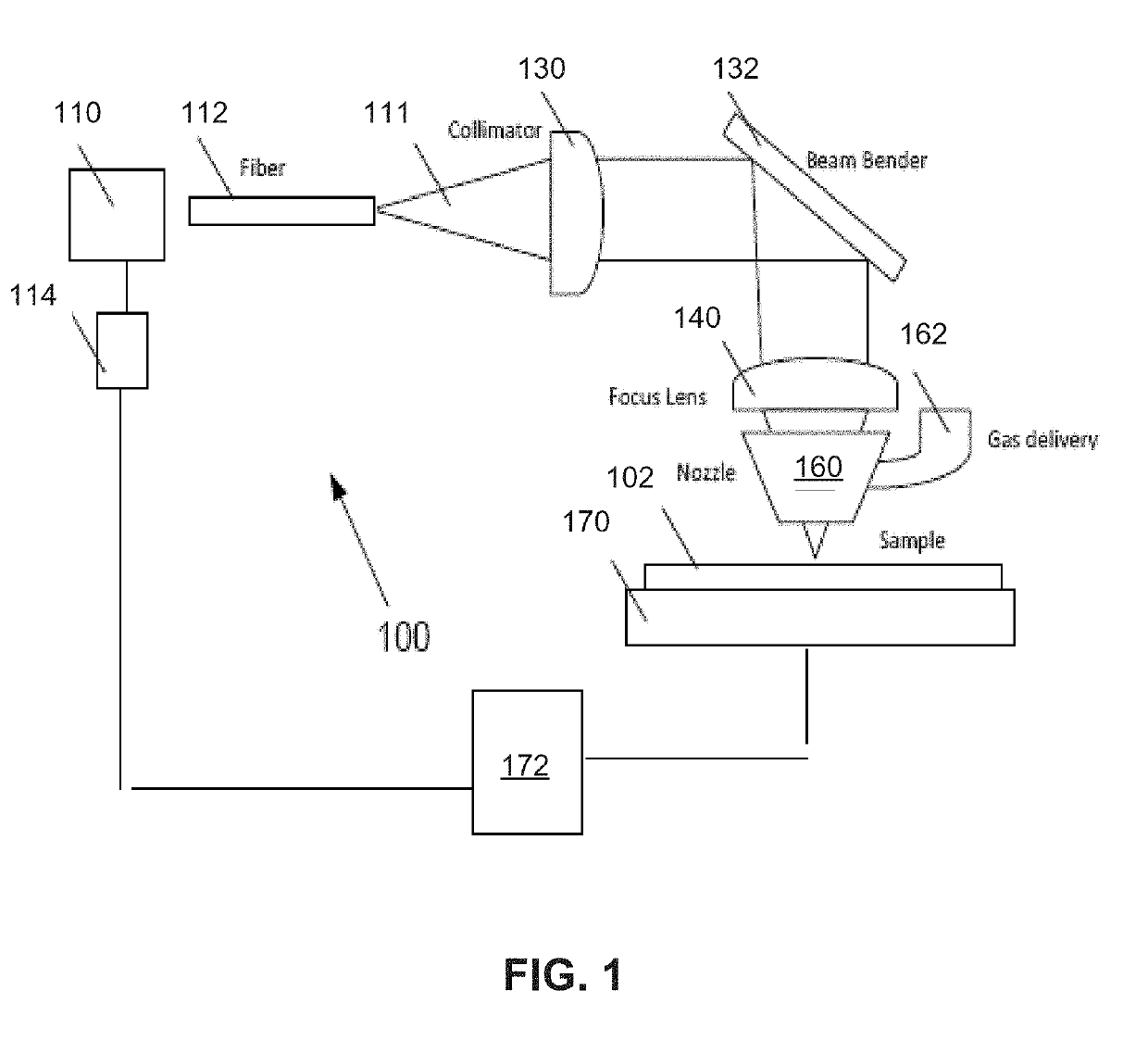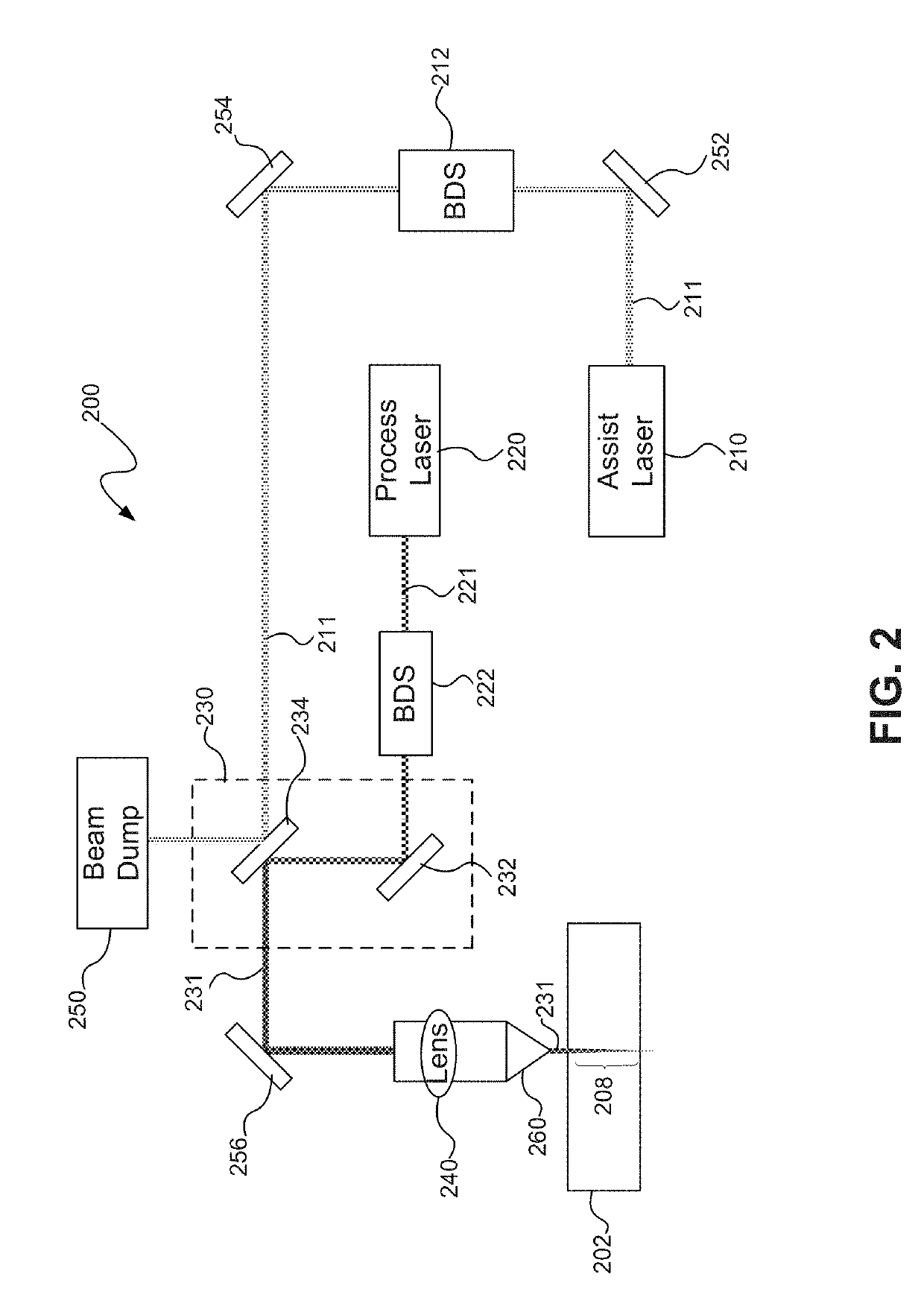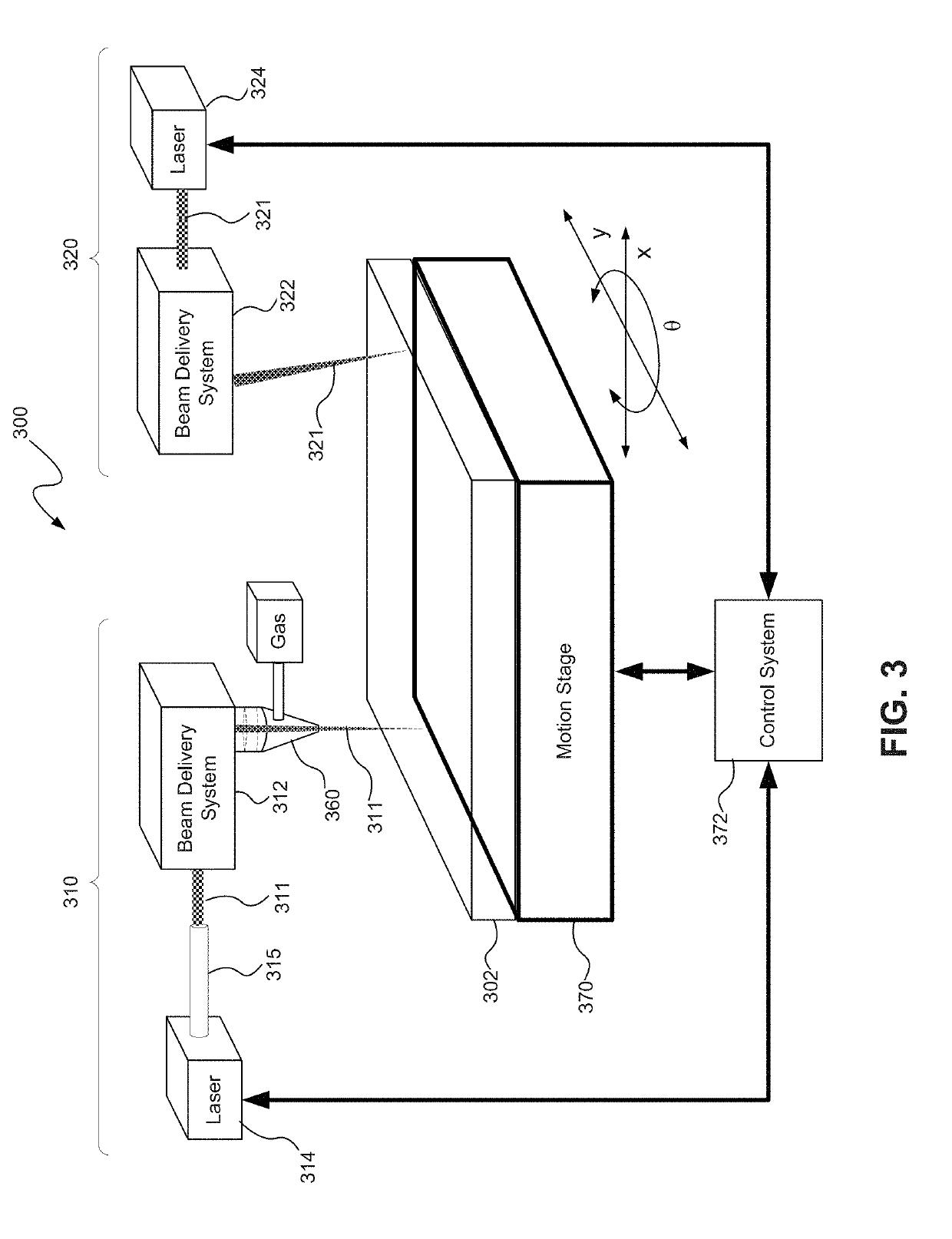System and method for laser beveling and/or polishing
- Summary
- Abstract
- Description
- Claims
- Application Information
AI Technical Summary
Benefits of technology
Problems solved by technology
Method used
Image
Examples
Embodiment Construction
[0030]Laser processing of hard dielectric materials, consistent with embodiments of the present disclosure, may include cutting a part from a hard dielectric material using a continuous wave laser operating in a quasi-continuous wave (QCW) mode to emit consecutive laser light pulses in a wavelength range of about 1060 nm to 1070 nm (hereinafter “QCW laser”). Cutting using a QCW laser may be performed with a lower duty cycle (e.g., between about 1% and 15%) and in an inert gas atmosphere such as nitrogen, argon or helium. Laser processing of hard dielectric materials may further include post-cut processing the cut edges of the part cut from the dielectric material, for example, by beveling and / or polishing the edges to reduce edge defects. The post-cut processing may be performed using a laser beam with different laser parameters than the beam used for cutting, for example, by using a shorter wavelength (e.g., 193 nm excimer laser) and / or a shorter pulse width (e.g., a picosecond las...
PUM
| Property | Measurement | Unit |
|---|---|---|
| Angle | aaaaa | aaaaa |
| Fraction | aaaaa | aaaaa |
| Fraction | aaaaa | aaaaa |
Abstract
Description
Claims
Application Information
 Login to View More
Login to View More - R&D Engineer
- R&D Manager
- IP Professional
- Industry Leading Data Capabilities
- Powerful AI technology
- Patent DNA Extraction
Browse by: Latest US Patents, China's latest patents, Technical Efficacy Thesaurus, Application Domain, Technology Topic, Popular Technical Reports.
© 2024 PatSnap. All rights reserved.Legal|Privacy policy|Modern Slavery Act Transparency Statement|Sitemap|About US| Contact US: help@patsnap.com










